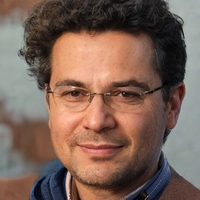You clicked because you want a straight answer, not a maze. You’ll get the count in the first line, then the full list, and a no-nonsense guide to admission and choosing smartly. If you’re short on time, the TL;DR below will do the job. If you’re planning JoSAA preferences for your kid, like I am with Nihal and Kavya here in Sydney, the deeper sections will save you a few headaches.
TL;DR
- There are 23 Indian Institutes of Technology (IITs) in India as of 2025. No new IITs were added in 2024-2025.
- Oldest: IIT Kharagpur (1951). Newest wave: IIT Tirupati, Palakkad, Bhilai, Goa, Jammu, Dharwad (2015-2016).
- Admission path stays the same: JEE Main → JEE Advanced → JoSAA counselling.
- Seat counts change slightly each year. Check the latest JoSAA Seat Matrix for exact numbers.
- Choosing IIT vs branch? Use a simple rule: career goal first, then branch depth, then campus ecosystem, then city/access.
The short answer and what changed (2025)
The number you’re looking for is 23. If you want the date-stamp: this holds for the 2025 admission cycle. The last expansion round for IITs happened in 2015-2016, when six new campuses were notified and started admitting students: Tirupati, Palakkad, Bhilai, Goa, Jammu, and Dharwad.
Why this matters: coaching rumors love to inflate or float “new IIT” news every spring. Before you believe anything, verify against the Ministry of Education’s Institutes of National Importance list or the official JEE Advanced site. If a new IIT were created, you’d see it reflected in the JoSAA portal and the Seat Matrix for that year.
What did change recently? Not the count, but the details-more departments, new data science/AI programs, dual-degree options, and infrastructure upgrades at the younger IITs. Rankings shift year to year as labs, faculty strength, and research output grow. That’s why the choice is not just “Old IIT good, New IIT bad.” It’s subtler, especially for computing, data, and interdisciplinary areas that are scaling fast at newer campuses.
Primary sources to rely on for the latest: Ministry of Education notifications (for institute status), JEE Advanced official website (exam and eligibility), JoSAA (seat matrix, closing ranks), and NIRF India Rankings (for a research/teaching snapshot). These are the four pillars I cross-check for my own kids.
The complete IIT list (state, city, year; oldest to newest)
Here’s the full and current list of 23 IITs. I’ve added the state, city, and the year they became IITs or started as one.
- IIT Kharagpur - West Bengal (Kharagpur) - 1951
- IIT Bombay - Maharashtra (Mumbai) - 1958
- IIT Madras - Tamil Nadu (Chennai) - 1959
- IIT Kanpur - Uttar Pradesh (Kanpur) - 1959
- IIT Delhi - Delhi (New Delhi) - 1961
- IIT Guwahati - Assam (Guwahati) - 1994
- IIT Roorkee - Uttarakhand (Roorkee) - became IIT in 2001 (earlier University of Roorkee)
- IIT Ropar - Punjab (Rupnagar) - 2008
- IIT Bhubaneswar - Odisha (Bhubaneswar) - 2008
- IIT Gandhinagar - Gujarat (Gandhinagar) - 2008
- IIT Hyderabad - Telangana (Hyderabad) - 2008
- IIT Jodhpur - Rajasthan (Jodhpur) - 2008
- IIT Patna - Bihar (Patna) - 2008
- IIT Indore - Madhya Pradesh (Indore) - 2009
- IIT Mandi - Himachal Pradesh (Mandi) - 2009
- IIT (BHU) Varanasi - Uttar Pradesh (Varanasi) - became IIT in 2012 (earlier IT-BHU)
- IIT (ISM) Dhanbad - Jharkhand (Dhanbad) - became IIT in 2016 (earlier Indian School of Mines)
- IIT Tirupati - Andhra Pradesh (Tirupati) - 2015
- IIT Palakkad - Kerala (Palakkad) - 2015
- IIT Bhilai - Chhattisgarh (Bhilai) - 2016
- IIT Goa - Goa (Ponda) - 2016
- IIT Jammu - Jammu & Kashmir (Jammu) - 2016
- IIT Dharwad - Karnataka (Dharwad) - 2016
If you like to think geographically, here’s a quick state/region view to help with travel and climate planning (yes, that matters when you’re sending a kid thousands of kilometers away):
- North: IIT Delhi, IIT Kanpur, IIT Ropar, IIT Jammu, IIT Roorkee
- West: IIT Bombay, IIT Gandhinagar, IIT Jodhpur, IIT Goa, IIT Dharwad (Karnataka is technically southwest)
- South: IIT Madras, IIT Hyderabad, IIT Tirupati, IIT Palakkad, IIT Mandi (Himachal is north, but climate-wise it’s a separate consideration)
- East: IIT Kharagpur, IIT Bhubaneswar
- Central/East-Central: IIT Patna, IIT (ISM) Dhanbad, IIT Indore, IIT Bhilai, IIT (BHU) Varanasi
Two quick history nuggets my kids found cool while making flashcards:
- IIT Kharagpur is the oldest and sits on the Hijli Detention Camp site-powerful history and a sprawling campus.
- IIT Roorkee is older than most-founded in 1847 as a college-converted to IIT in 2001.
Source check for the list: Ministry of Education notifications and the JoSAA institute roster. NIRF gives useful context, but the official status piece comes from MoE.

How to pick the right IIT and branch (practical rules)
“Which IIT should I prefer?” is a bigger decision than “How many are there?” Here’s a simple, repeatable way to decide, whether your rank is in triple digits or five digits.
Decision order (works well in practice):
- Career direction: software/product, core engineering, research/academia, data/AI, finance/quant.
- Branch depth: is the curriculum strong and current? What about labs, capstone projects, industry mentors?
- Campus ecosystem: alumni reach, internships, student clubs, hackathons, design/entrepreneurship cells.
- City and access: metros help with internships; smaller towns can win on focus and community.
- Fit for the student: comfort with climate, language, distance from home, hostel life, and support.
Rules of thumb that save time:
- If you’re sure about CS/AI/data and your rank allows it, prioritize a strong CS program even at a newer IIT over a less aligned branch at an older IIT. Skill and projects dominate outcomes in CS.
- If you want core engineering (EE/ME/CE/CH), older IITs with deep labs can be worth a branch compromise. Alumni networks and research infrastructure matter for core careers and higher studies.
- Dual-degree (BTech + MTech) can be a smart pathway if you want research depth or a niche specialization without a separate entrance later.
- Don’t chase a fancy-sounding new program without checking the course list, faculty strength, and placements. Names are marketing; syllabi and mentors are substance.
- Look up closing ranks for at least three years to spot trends. Anomalies happen; trends guide.
Two real-world preference list examples that I walked through with Nihal and a neighbor’s daughter:
- Case A (software/product focus, AIR ~1,800): CS or AI/DS at IIT Hyderabad, IIT Roorkee, IIT Guwahati; then CS at IIT Indore, IIT Mandi; then ECE at IIT Hyderabad, IIT Roorkee, IIT BHU; finally CS at IIT Jodhpur, IIT Patna, IIT Ropar. Why: strong CS ecosystems and good internship pipelines, with Hitech City proximity a plus for Hyderabad.
- Case B (core mechanical, AIR ~5,500): ME at IIT Madras/Delhi/Bombay if available; else ME at IIT Kharagpur/Roorkee; then Production/Manufacturing at IIT (ISM) Dhanbad or IIT (BHU) with solid labs; then consider dual-degree ME at IIT Kharagpur or Roorkee. Why: lab depth and alumni in core roles weigh more than city.
Quick pitfalls to avoid:
- Picking a program only because the title says “AI” while the syllabus is 80% generic CS. Read course lists.
- Assuming a newer IIT means weak placements. Several newer campuses have sharp CS/ECE outcomes due to agile curricula and close mentoring.
- Ignoring living conditions. Hostel quality, mess, and campus transit affect day-to-day energy more than you think.
- Not planning for internal branch change. Check each IIT’s policy: GPA thresholds, number of seats, and which branches are eligible.
How to verify campus strength fast (one-evening method):
- Find the department’s curriculum page. Count advanced electives in your interest area.
- Open faculty profiles. Scan for recent publications, patents, or funded projects.
- Check the latest placement report highlights and internship partners. You don’t need every stat-just patterns.
- Search for the campus chapter’s hackathon/technical festival winners in the last two years.
And one parent tip: before locking choices, call or DM two current students per campus-one senior and one junior. You’ll learn more about projects and culture in 20 minutes than a glossy brochure will tell you in 20 pages.
Admissions, seat matrix, mini‑FAQ, and next steps
Here’s the bird’s-eye view of the path and the places where families usually trip up. I’m keeping it clean and practical.
Admission path (unchanged):
- JEE Main (eligibility and screening). Perform well enough to qualify for JEE Advanced.
- JEE Advanced (IIT entrance). Your AIR here decides the IIT/branch band you can realistically target.
- JoSAA counselling. Lock preferences, watch mock allotments, and be careful with freeze/float/slide decisions.
Seat counts: The total BTech seats across IITs inch up or down each year due to capacity, reservation adjustments, or new programs. To avoid bad info, treat last year’s JoSAA Seat Matrix as your baseline and update when the new matrix drops. For offers and closing ranks, the JoSAA official round-wise reports are the gold standard.
Reservation and category policies: These are defined nationally (GEN, GEN-EWS, OBC-NCL, SC, ST, PwD). IITs apply them uniformly through JoSAA. If you qualify for a category, get the exact certificate format and dates right, because JoSAA is strict on validity. One wrong date and you’re forced into a different pool.
Opening vs closing ranks: When comparing IITs and branches, look at closing ranks for your category, not just OPEN/GEN. Use three-year data so you don’t overreact to a one-year swing caused by a new program or a surge in CS applicants.
Fees and financial aid: Fees vary but are broadly similar. Many IITs offer fee remissions based on family income. Check the institute’s latest “Fee Structure” page and the Student Welfare section for scholarships. Don’t assume uniformity; the fine print matters.
Source note for this section: JEE Advanced official site (exam and eligibility), JoSAA (seat matrix, opening/closing ranks, process flow), and each IIT’s official pages (fees, curriculum, branch change rules). Use NIRF 2024 for a comparative feel of research and teaching strength.
Checklist you can print and tick off:
- Verify the count: 23 IITs (MoE or JEE Advanced site).
- Download last year’s JoSAA Seat Matrix and round-wise closing ranks.
- Write your top 12 branches by preference, not by hype.
- Map branches to campuses that match your non-negotiables (labs, city, climate).
- Prepare certificates (category/EWS/OBC-NCL/PwD) in the exact required format and validity window.
- Draft two preference lists: aspiration list and safety list. Merge after mock allotments.
- Decide your freeze/float/slide strategy before Round 1 to prevent panic clicks.
Mini‑FAQ
- Q: So, exactly How many IITs in India right now?
A: 23. That’s the official count for 2025 admissions. - Q: Are any new IITs expected soon?
A: There’s no official notification adding to the list. Always trust MoE notifications, not speculation. - Q: Which IIT is best for CS if not Bombay/Delhi/Madras?
A: Look at IIT Kanpur, IIT Kharagpur, IIT Roorkee, IIT Hyderabad, and IIT Guwahati. Among newer ones, IIT Indore, IIT Ropar, IIT Jodhpur, and IIT Mandi have credible CS ecosystems. - Q: Is IIT (ISM) Dhanbad a “real” IIT?
A: Yes. It was converted to IIT status in 2016 and participates fully in JEE Advanced and JoSAA like the others. - Q: What about IIT (BHU) Varanasi?
A: Integrated into IIT system in 2012. It’s one of the 23 and has strong core engineering programs. - Q: Do newer IITs have permanent campuses now?
A: Most do or are in advanced stages. Check the specific institute’s site for the latest campus status and hostels. - Q: How many total seats are there in IITs?
A: Varies year to year. Expect high tens of thousands of applicants for roughly a few tens of thousands of BTech seats across all categories. For exact numbers, use the current JoSAA Seat Matrix. - Q: Should I pick ECE at a new IIT over lower‑demand branches at an old IIT?
A: If your goal is electronics/embedded/signal/data pipelines, a strong ECE program at a newer IIT can beat an unrelated branch at an older campus. But verify labs and electives. - Q: Do IITs offer Data Science/AI as separate BTechs?
A: Several do. Names differ (AI, AI&DS, Data Science, Computing). Read the course list-some are CS‑heavy, others are stats‑heavy.
Next steps (for 2025 planners):
- Confirm the 23-IIT list on the JEE Advanced or MoE site when the 2025 brochure is out.
- Collect last year’s JoSAA round-wise closing ranks for your category and build a rank band for each target branch.
- Create two preference sheets: 1) Dream-first, 2) Safety-first. After mock allotments, merge sensibly.
- Bookmark the certificate formats page and set calendar reminders to get fresh EWS/OBC-NCL certificates if needed.
- Talk to two current students per target institute-ask about projects, internship support, and campus life.
If you wanted just the headline number, you’ve got it: 23. If you’ve got a teenager at home like I do, you also know the real work is in the choices after the rank. Use official sources for facts, your kid’s goals for direction, and your shortlist to keep emotions in check. That mix works.

